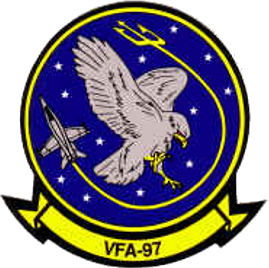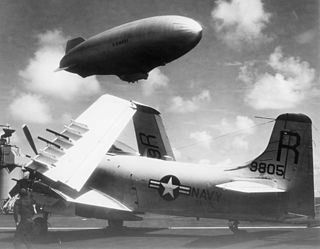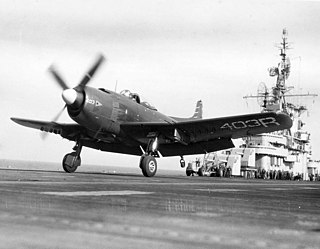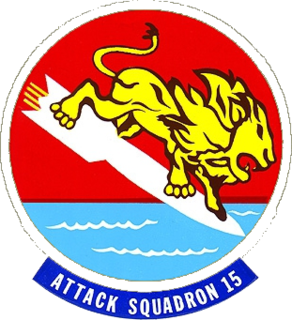
The Battle of Midway was a major naval battle in the Pacific Theater of World War II that took place on 4–7 June 1942, six months after Japan's attack on Pearl Harbor and one month after the Battle of the Coral Sea. The U.S. Navy under Admirals Chester W. Nimitz, Frank J. Fletcher, and Raymond A. Spruance defeated an attacking fleet of the Imperial Japanese Navy under Admirals Isoroku Yamamoto, Chūichi Nagumo, and Nobutake Kondō near Midway Atoll, inflicting devastating damage on the Japanese fleet that rendered their aircraft carriers irreparable. Military historian John Keegan called it "the most stunning and decisive blow in the history of naval warfare", while naval historian Craig Symonds called it "one of the most consequential naval engagements in world history, ranking alongside Salamis, Trafalgar, and Tsushima Strait, as both tactically decisive and strategically influential".

The Douglas SBD Dauntless is a World War II American naval scout plane and dive bomber that was manufactured by Douglas Aircraft from 1940 through 1944. The SBD was the United States Navy's main carrier-based scout/dive bomber from mid-1940 through mid-1944. The SBD was also flown by the United States Marine Corps, both from land air bases and aircraft carriers. The SBD is best remembered as the bomber that delivered the fatal blows to the Japanese carriers at the Battle of Midway in June 1942. The type earned its nickname "Slow But Deadly" during this period.
The Strike Fighter Squadron 14 (VFA-14) "Tophatters" are a United States Navy fighter attack squadron based at Naval Air Station Lemoore. They fly the F/A-18E Super Hornet, and are the Navy's oldest active squadron, having formed in 1919. Their callsign is Camelot, and their tail code is NG.

Strike Fighter Squadron 97 (VFA-97), also known as the "Warhawks", are a United States Navy F/A-18E squadron stationed at Naval Air Station Lemoore. Their tail code is "AJ" and their radio callsign is Warhawk.

Strike Fighter Squadron 115 (VFA-115) is known as the "Eagles", callsign "Talon", a United States Navy F/A-18E Super Hornet strike fighter squadron stationed at Marine Corps Air Station Iwakuni. Their tail code is NF. It was established as Torpedo Squadron VT-11 on 10 October 1942, redesignated VA-12A on 15 November 1946, VA-115 on 15 July 1948, then finally VFA-115.

Strike Fighter Squadron 195 (VFA-195), also known as the "Dambusters", is a United States Navy F/A-18E Super Hornet fighter squadron stationed at Marine Corps Air Station Iwakuni, Japan. They are a part of Carrier Air Wing Five (CVW-5) and their tail code is NF. Their radio callsign is "Chippy".

Maxwell Franklin Leslie was a naval aviator in the United States Navy during World War II. He is credited with playing a major part in the Battle of Midway.

James D. "Jig Dog" Ramage was a Naval Aviator in World War II, the Korean War, the Vietnam War and the Cold War, and was a driving force in putting nuclear-capable attack aircraft aboard aircraft carriers. Before retirement he attained the rank of rear admiral.

Attack Squadron 35 (VA-35) was an aviation unit of the United States Navy. The squadron's nickname is unknown. Its insignia, a winged dragon, was revised several times during its lifetime. The squadron was first established as Torpedo and Bombing Squadron 2 (VT-2) on 6 July 1925, and was redesignated as VT-2B on 1 July 1927, VT-3 on 1 July 1937, VA-4A on 15 November 1946, and, finally, VA-35 on 7 August 1948. The squadron was disestablished on 7 November 1949. It was the first squadron to carry the VA-35 designation, the second VA-35 was redesignated from VA-34 on 15 February 1950 and disestablished on 31 January 1995.

VA-54 was an early and long-lived Attack Squadron of the U.S. Navy, operating under many designations during its 20-year life. It was established as Scouting Squadron VS-2B on 3 July 1928, and redesignated as VS-3 on 1 July 1937, and as Bombing Squadron VB-4 on 1 March 1943. It was redesignated as VB-5 on 15 July of that same year, and as Attack Squadron VA-5A on 15 November 1946. Finally, it was redesignated as VA-54 on 15 November 1946. VA-54 was disestablished on 1 December 1949. The squadron's insignia varied over its lifetime, depicting in turn a bird dog, a devil, and finally a bomb and five playing cards. Its nickname is unknown. It was the first squadron to be designated VA-54, a second VA-54 was redesignated from VF-54 on 15 June 1956 and disestablished on 1 April 1958.

VA-55 was an Attack Squadron of the U.S. Navy. It was established as Torpedo Squadron VT-5 on 15 February 1943, redesignated VA-6A on 15 November 1946, and finally designated VA-55 on 16 August 1948. The squadron was disestablished on 12 December 1975. It was the first squadron to be designated VA-55, the second VA-55 was established on 7 October 1983 and disestablished on 1 January 1991.

VA-94 was an Attack Squadron of the U.S. Navy. It was established as Bombing Squadron VB-99 on 1 July 1943, redesignated as VB-20 on 15 October 1943, and as VA-9A on 15 November 1946. It was finally redesignated as VA-94 on 12 August 1948. The squadron was disestablished on 30 November 1949. Its nickname was Bombing Twenty's Tough Kitty from 1943 to 1946.

VA-114 was an Attack Squadron of the U.S. Navy. It was established as Bombing Squadron VB-11 on 10 October 1942, redesignated VA-11A on 15 November 1946, and finally as VA-114 on 15 July 1948. The squadron was disestablished on 1 December 1949. The squadron was known as the Pegasus.

VA-175, nicknamed the Devil's Diplomats, was an attack squadron of the U.S. Navy. It was established as Torpedo Squadron VT-82 on 1 April 1944, redesignated as VA-18A on 15 November 1946, and as VA-175 on 11 August 1948. The squadron was disestablished on 15 March 1958.
VA-194 was an Attack Squadron of the U.S. Navy. It was established as Bombing Squadron VB-19 on 15 August 1943. It was redesignated as VA-19A on 15 November 1946, and as VA-194 on 24 August 1948. The squadron was disestablished on 1 December 1949. Its nickname is unknown.

VA-174 was an Attack Squadron of the U.S. Navy. It was established as Bomber Squadron VB-82 on 1 April 1944, redesignated as VA-17A on 15 November 1946, and finally as VA-174 on 11 August 1948. The squadron was disestablished on 25 January 1950. Its nickname throughout its life was the Battering Rams. A second, unrelated, squadron was assigned the VA-174 designation in 1966.

Attack Squadron 15 (VA-15), nicknamed the Valions, was an aviation unit of the United States Navy. It was established as Torpedo Squadron 4 (VT-4) on 10 January 1942, redesignated VA-2A on 15 November 1946, and finally redesignated VA-15 on 2 August 1948. The squadron was disestablished on 1 June 1969, after 27 years of service.
The Enterprise Air Group was established on 1 July 1938, encompassing all squadrons embarked in USS Enterprise (CV-6). The group was divided into four squadrons, each with eighteen aircraft dedicated to a particular role. The squadrons were designated according to their role, and all were given the unit number six, derived from the hull number of the Enterprise. Bombing Six (VB-6) was equipped with Douglas SBD-2 Dauntless dive bombers, Fighting Six (VF-6) with Grumman F4F-3 Wildcat fighters, and Torpedo Six (VT-6) with Douglas TBD Devastator torpedo bombers. The fourth squadron, Scouting Six (VS-6) also had the SBD-2 Dauntless, but was more focused on the scout bomber role. This air group was embarked on board the Enterprise at the time of the attack on Pearl Harbor.

Ayao Shirane was a fighter ace in the Imperial Japanese Navy (IJN) during World War II. He participated in various battles and campaigns throughout the Pacific War and was eventually shot down and killed over Leyte, Philippines on 24 November 1944. He was officially credited with destroying nine enemy aircraft.

Iyōzō Fujita was an officer and ace fighter pilot in the Imperial Japanese Navy (IJN) during the Pacific War. He was officially credited with destroying 13 enemy aircraft. During the Battle of Midway alone, he claimed ten aircraft shot down in one day.




















